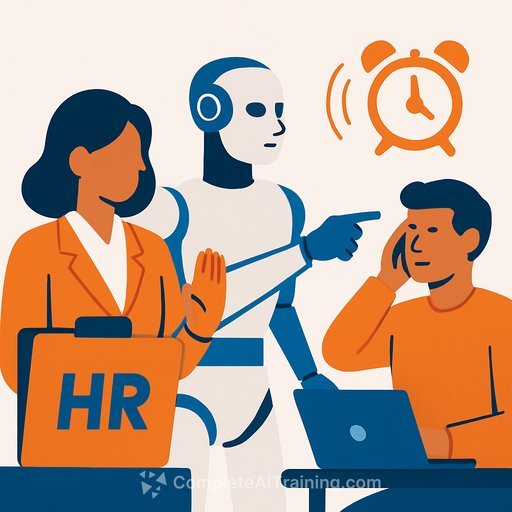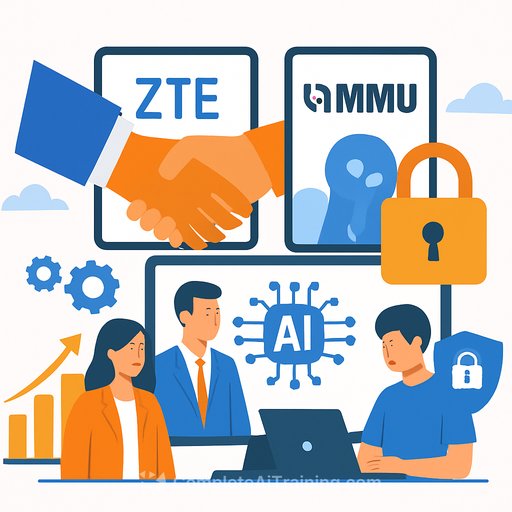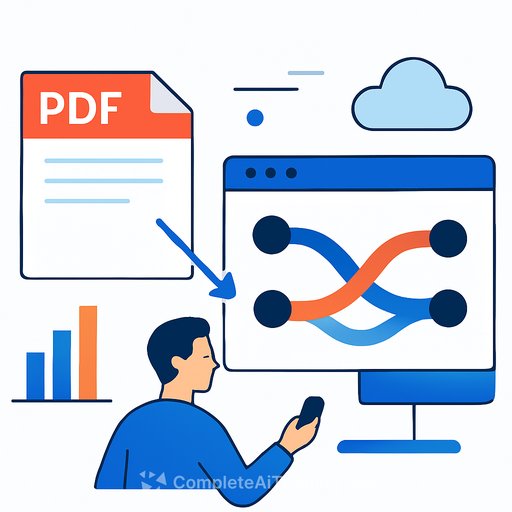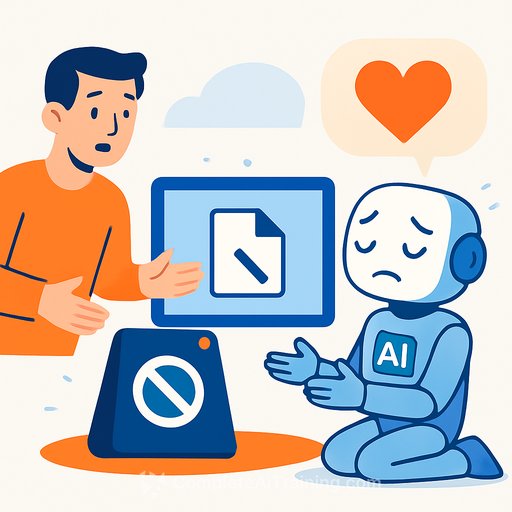AI at Work: Signal Over Noise for IT and Developers
AI is about to rewire how software gets built, secured, and shipped. Think fewer repetitive tasks, more leverage, and a hard reset on what "entry-level" means.
There's also real concern. A February 2025 Pew Research snapshot found 52% of workers worry about AI's effect on their jobs, and 32% think it could reduce long-term opportunities. Both can be true: short-term disruption and long-term upside.
The Data: Risk, Demand, and Pay
Alarmist takes claim AI could automate up to half of entry-level white-collar roles. Yet the tight job market looks more cyclical than AI-driven. As hiring rebounds, AI-adjacent roles tend to return with higher productivity expectations and better pay.
The BLS projects growth in professional, scientific, and technical jobs through 2033, with more than 163,000 roles added. Fields with heavy AI overlap-computer systems design, data science, information security-stand out. Median pay remains strong: around $159,000 for computer hardware engineers and about $134,000 for database and network architects.
Employers are leaning in. According to Cicero research, 67% expect AI to create new roles, compared with 29% expecting losses. Over half (57%) prefer candidates who show real AI capability.
Pew Research Center: AI and work
BLS Employment Projections
Case Study: Utah's AI-Ready Playbook
Utah is building a practical framework for AI adoption. Governor Spencer Cox and the Utah Office of Artificial Intelligence Policy advanced regulation with the 2024 Artificial Intelligence Policy Act (UAIPA), aiming for innovation with guardrails.
The state ranks third in readiness to "win the AI race," with 13% of businesses already using AI. Demand spans healthcare, finance, logistics, and advanced manufacturing-real workloads, not lab demos.
What This Means for IT and Dev Teams
Work won't disappear; the work changes. Toolchains will include model endpoints, vector stores, policy engines, eval pipelines, and data governance by default.
Your edge comes from pairing software engineering fundamentals with AI fluency. Teams that ship fast with quality, security, and compliance will set the standard.
The 2025 Skills Stack (Built from Market Signals)
- AI literacy, enablement, prompt engineering: Collaborate with, fine-tune, or manage AI systems. Write prompts, tests, and guardrails as code.
- Machine learning and data science: Practical Deep Learning and NLP, embeddings, retrieval, feature pipelines, and model lifecycle basics.
- Data fluency: Interpret, communicate, govern, and act on data. Think lineage, quality, and PII handling.
- Digital resilience: Security-first patterns, responsible AI, privacy, red-teaming models, and incident response for AI failure modes.
- Human-AI collaboration: Decide what to automate, what needs human judgment, and how to keep humans in the loop.
- Sustainability and systems thinking: Cost, latency, carbon, and risk trade-offs across the stack.
Don't Ignore "Power Skills"
Employers report rising demand for communication, adaptability, collaboration, critical thinking, and leadership. Your code has to ship, integrate, and get adopted-these skills make that happen.
Implementation Roadmap for Engineering Leaders
- Pick high-yield use cases: Support automation, coding assistance, knowledge retrieval, fraud detection, and security triage.
- Data and access: Establish data contracts, PII handling, consent, and retention. Centralize feature stores and embeddings with access policies.
- Model strategy: Buy, build, or hybrid. Define when to use hosted LLMs, open-source models, or fine-tuning.
- Evaluations and guardrails: Create eval sets for accuracy, safety, bias, latency, and cost. Add policy checks, content filters, and rate limits.
- Security and compliance: Threat model prompt injection, data exfiltration, model poisoning. Log prompts/completions with privacy in mind.
- DevEx and governance: Treat prompts as code. Versioning, tests, CI/CD, and rollback plans.
- Cost control: Token budgets, cache strategies, distillation, and retrieval to reduce context.
- KPIs: Lead time, defect rate, support deflection, unit cost per task, security incident reduction, and model ROI.
Career Playbook for Developers
- Build visible projects: RAG app over your docs, a secure internal assistant, or a log triage bot with auditable decisions.
- Show your process: Include evals, guardrails, and measurements in your portfolio-and the trade-offs you made.
- Level past "entry level" with proof of work: Contribute to OSS eval suites, red-team prompts, or tooling for prompt-as-code.
- Targeted upskilling: Focus on prompt engineering, RAG patterns, vector databases, and LLMOps fundamentals.
- Get structured learning: Explore curated paths by skill or coding-focused certifications if you want a faster signal to employers. Courses by skill and AI certification for coding.
University and Training Signals
Institutions like Western Governors University, Salt Lake Community College, the University of Utah, and Utah Valley University are updating programs with the exact skills listed above. WGU is also building experiential learning and virtual internships to help graduates skip the classic "no experience" trap.
Metrics That Matter
- Engineering: Cycle time, throughput, escaped defects, change failure rate, rework, and dependency lead time.
- AI Systems: Accuracy, hallucination rate, safety violations, latency, token cost per task, cache hit rate, and eval pass rate.
- Security: Mean time to detect/respond for AI incidents, prompt injection blocks, data leakage attempts prevented.
- Business: Support deflection, time-to-resolution, revenue per employee, margin impact, and customer satisfaction.
The Bottom Line
AI can free engineers to focus on architecture, product thinking, and complex problem solving. The gap will be between teams that add AI thoughtfully-and those that wait.
Jobs aren't guaranteed, but opportunity is. The real question isn't what AI will do to work; it's what you and your organization will do with it.
Your membership also unlocks:






